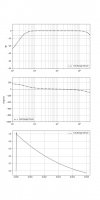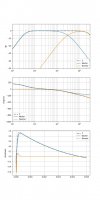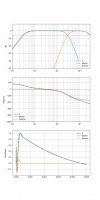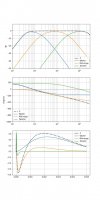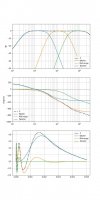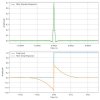BrokenEnglishGuy
Major Contributor
- Joined
- Jul 19, 2020
- Messages
- 1,931
- Likes
- 1,153
Hi.
There is some comparasion between the ideal step response vs 2-way and 3-way step response, sure the 3-way looks worse than the 2-way. If someone have the image please post it.
That being said, the step response in a 3-way system improve when the crossover point its lower?
for example 3khz and 450hz vs 3khz and 200hz, the 3khz/200hz will be better?
Thanks
There is some comparasion between the ideal step response vs 2-way and 3-way step response, sure the 3-way looks worse than the 2-way. If someone have the image please post it.
That being said, the step response in a 3-way system improve when the crossover point its lower?
for example 3khz and 450hz vs 3khz and 200hz, the 3khz/200hz will be better?
Thanks

